Bird Cage Secrets: How to Pick the Perfect One
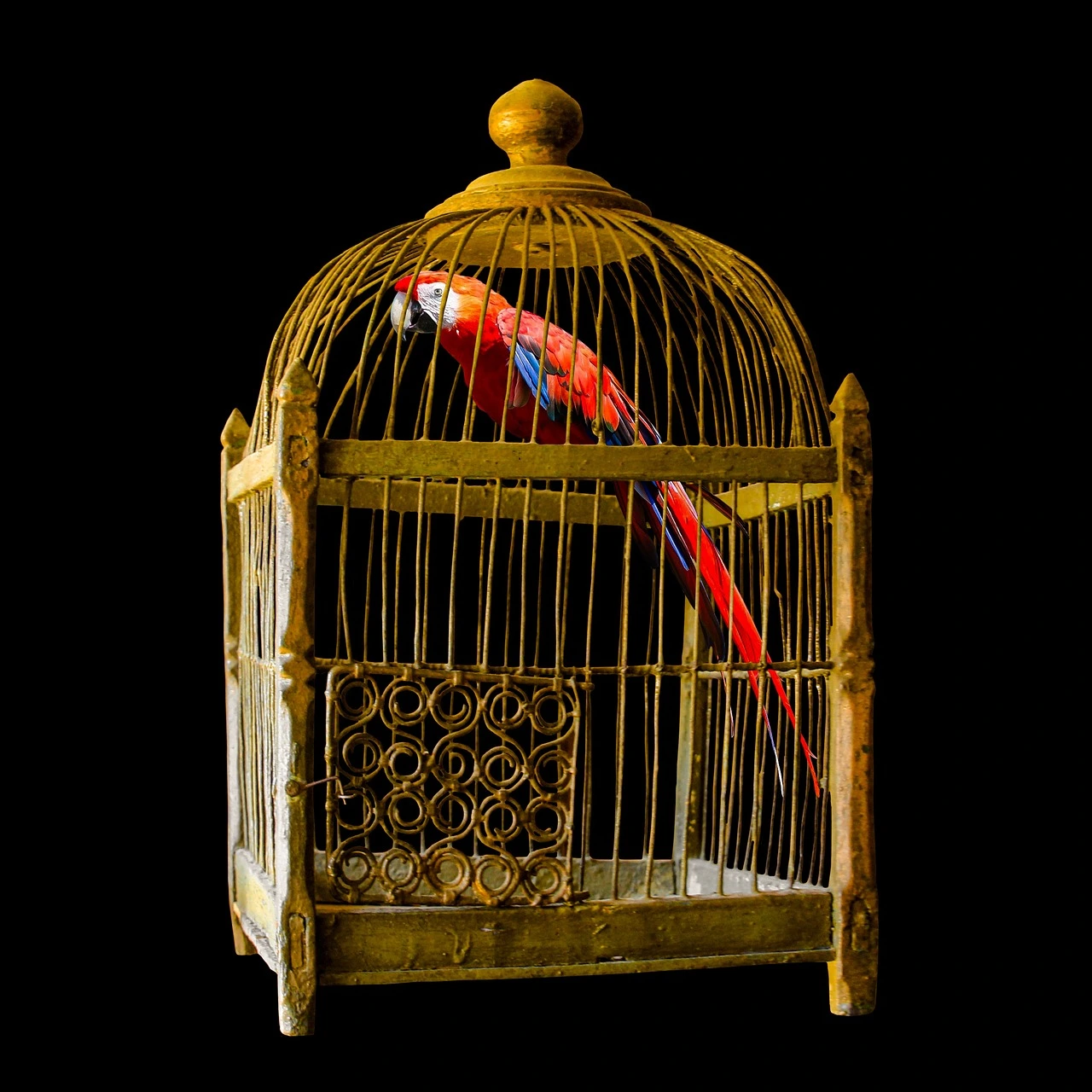
When it comes to providing a safe and comfortable home for your feathered friend, choosing the right bird cage is perhaps the most important decision you’ll make as a pet bird owner. A well-designed bird aviary not only ensures your bird’s safety but also contributes significantly to their physical and mental well-being. In this comprehensive guide, we’ll explore everything you need to know about bird aviaries, from their fascinating evolution to practical tips on selection, setup, and maintenance.
Table of Contents
The Evolution and Importance of Bird Cages
Birds have been kept as companions for thousands of years, with evidence of bird cages dating back to ancient civilizations. The earliest bird aviaries were crafted from natural materials like bamboo and wood, primarily designed for function over form. Today’s bird cages represent a significant evolution, blending safety, convenience, and aesthetic appeal.
“A bird cage is more than just a container—it’s your pet’s primary environment, their territory, their safe space, and their home.” – Dr. Alan Peterson, Avian Veterinarian
The importance of a quality bird aviary cannot be overstated. Unlike dogs or cats that have free reign of your home, pet birds spend the majority of their time in their aviaries. This makes the bird cage the single most influential factor in your pet’s quality of life. A properly chosen aviary provides:
- Safety from household hazards
- Security from potential predators (including other pets)
- A designated space for feeding, playing, and resting
- Environmental enrichment opportunities
- A sense of territory and security
Types of Bird Cages: Finding the Perfect Match
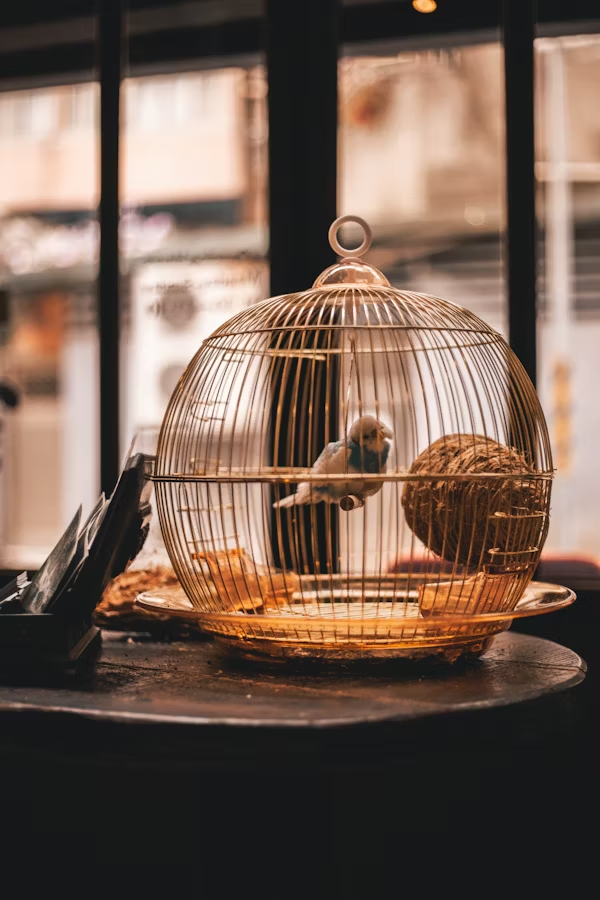
The market offers a vast array of bird cage designs, each with distinct advantages. Understanding the differences will help you make an informed choice for your feathered companion.
Bird Cage Shapes
| Shape | Best For | Key Benefits |
|---|---|---|
| Dome-top | Finches, Canaries, Parakeets | Provides vertical flying space, visually appealing |
| Rectangular | Most bird species | Maximizes space efficiency, stable design |
| Play-top | Larger parrots | Includes external play area, enrichment opportunities |
| Flight cage | Multiple small birds | Extra horizontal space for flying, social interaction |
| Corner | Space-constrained homes | Space-efficient design, fits well in room corners |
| Aviary | Multiple birds, outdoor use | Maximum space, can accommodate multiple species |
Bird Cage Materials
The material of your bird aviary affects its durability, safety, and maintenance requirements:
- Metal Cages: Most common and durable option. Look for powder-coated or stainless steel to prevent rust. Ensure paint is non-toxic and chip-resistant.
- Wooden Cages: Aesthetically pleasing but harder to clean thoroughly. Best for gentle birds that don’t chew excessively. Select hardwoods with bird-safe finishes.
- Acrylic/Plastic Components: Modern cages may incorporate clear plastic panels. These provide better protection from drafts but can scratch easily and may yellow over time.
- Hybrid Materials: Many quality cages combine materials, such as metal frames with acrylic feeding doors or wooden accents.
Important Bird Cage Features
When selecting the best bird aviary for your pet, pay special attention to:
- Bar Spacing: Critical for safety to prevent escapes or injuries. Small birds require narrower spacing (⅜” to ½”), while larger species need wider spacing (¾” to 1″).
- Cage Access: Look for multiple doors, including large access doors for cleaning and smaller ones for daily interactions.
- Removable Trays: Essential for efficient cleaning and maintenance. Pull-out trays with optional grates prevent birds from accessing droppings.
- Secure Latches: Birds can be surprisingly adept at opening simple latches. Choose cages with complex or bird-proof closing mechanisms.
- Mobility Features: Caster wheels allow for easy repositioning, while sturdy stands provide stability and elevate the cage to a comfortable interaction height.
Choosing the Right Size: The Most Critical Decision
Perhaps no factor is more important than selecting the appropriate bird aviary size for your specific pet. An undersized cage can lead to physical and psychological problems, including:
- Muscle atrophy
- Feather damage
- Behavioral issues like feather plucking
- Stress and depression
- Obesity due to limited movement
Bird Cage Size Chart by Species
| Bird Species | Minimum Cage Size (W × D × H) | Recommended Bar Spacing |
|---|---|---|
| Finches, Canaries | 18″ × 18″ × 18″ | ⅜” |
| Budgies, Parrotlets | 20″ × 20″ × 20″ | ½” |
| Cockatiels, Lovebirds | 24″ × 24″ × 24″ | ½” – ⅝” |
| Conures, Pionus | 24″ × 24″ × 36″ | ⅝” – ¾” |
| African Greys, Amazons | 32″ × 23″ × 36″ | ¾” – 1″ |
| Large Macaws, Cockatoos | 36″ × 36″ × 48″+ | 1″ – 1½” |
Remember: These are minimum recommendations. When it comes to bird cage size, bigger is always better, provided the bar spacing is appropriate for your bird’s size.
Setting Up Your Bird Cage: Creating the Perfect Environment
A properly set up bird aviary creates a stimulating, comfortable environment that promotes natural behaviors. Follow these steps for optimal bird aviary setup:
1. Strategic Bird Cage Placement
Where you position your bird aviary significantly impacts your bird’s sense of security and overall well-being:
- Place the cage against a wall rather than in the center of a room to provide a sense of security
- Position away from drafts, direct sunlight, and kitchen areas (cooking fumes can be toxic)
- Avoid placing near windows where predators might be visible
- Ensure the cage is at eye level for social interaction
- Keep away from air conditioners, heaters, and fans
2. Installing Perches
Perches are essential for foot health and natural behavior:
- Include various diameters (¼” to 1½” depending on bird size) to exercise different foot muscles
- Use a variety of materials (natural wood, rope, concrete) for textural variety
- Position perches at different heights, ensuring space for wing stretching
- Replace natural perches regularly as they become soiled
- Avoid placing perches directly over food or water dishes
3. Food and Water Stations
Proper feeding stations ensure nutrition and minimize waste:
- Install multiple food and water stations for ease of access
- Position them away from perches to prevent contamination
- Consider specialized feeders for different food types (seeds, fruits, pellets)
- Choose designs that minimize spillage and food waste
- Ensure dishes are easily accessible for daily cleaning
4. Toys and Enrichment
Enrichment is crucial for psychological well-being:
- Rotate toys regularly to maintain interest
- Include variety: foraging toys, puzzle toys, destructible items, bells, mirrors (for some species)
- Ensure sufficient space between toys for movement
- Choose size-appropriate toys to prevent entanglement
- Inspect toys regularly for damage or hazardous components
Bird Cage Safety: Protecting Your Feathered Friend

Safety should be your primary concern when selecting and maintaining a bird cage. Here are critical safety considerations:
Potential Hazards to Avoid
- Toxic Materials: Avoid cages with zinc, lead, or copper components as these can cause metal poisoning.
- Sharp Edges: Inspect thoroughly for any sharp wire ends, unfinished edges, or manufacturing defects.
- Unsecured Components: Check that all feeders, toys, and accessories attach securely to prevent falling hazards.
- Paint Quality: Ensure all painted surfaces use non-toxic, chip-resistant finishes specifically rated as bird-safe.
- Unstable Design: Test the cage’s stability by gently pushing it from different angles—it should remain firmly in place.
Safety Features to Look For
- Double-locking mechanisms on doors
- Escape-proof feed doors
- Sturdy, tip-resistant base
- Removable components for thorough cleaning
- Child-proof locks for homes with young children
Cleaning and Maintenance: Keeping Your Bird Cage Healthy
Regular bird aviary cleaning is essential for your pet’s health and well-being. A dirty cage can lead to bacterial growth, respiratory issues, and various avian diseases.
Daily Bird Cage Cleaning Tasks
- Remove and replace soiled substrate/liner paper
- Clean and refresh water dishes
- Remove uneaten fresh foods
- Spot clean any obvious droppings from perches and toys
- Wipe down feeding areas
Weekly Bird Cage Cleaning Routine
- Transfer your bird to a secure temporary location
- Remove all accessories, perches, and dishes
- Scrape any stuck-on debris with a plastic scraper
- Soak removable components in bird-safe disinfectant
- Scrub aviary bars, floor, and frame with bird-safe cleaner
- Rinse thoroughly with clean water
- Dry completely before reassembling
- Replace substrate and return clean accessories
Recommended Bird Cage Cleaning Products
- Bird-Safe Disinfectants: F10SC, Aviclean, or diluted vinegar solution (1:1 with water)
- Natural Cleaners: Baking soda paste for stuck-on materials
- Cleaning Tools: Dedicated brushes with plastic (not metal) bristles
- Steam Cleaners: Excellent chemical-free option for deep cleaning
“An ounce of prevention through regular cage cleaning is worth a pound of cure in veterinary bills.” – Dr. Jessica Martinez, Exotic Pet Specialist
Bird Cage Accessories: Enhancing Your Pet’s Home
The right accessories transform a basic bird aviary into a stimulating, comfortable habitat:
Essential Bird Cage Accessories
- Specialized Perches
- Natural wood branches (bird-safe species like apple, manzanita)
- Thermal perches for cold climates
- Textured perches for nail maintenance
- Rope perches for foot exercise
- Feeding Stations
- No-spill food cups
- Automatic waterers
- Foraging feeders that encourage natural behaviors
- Treat holders for positive reinforcement
- Environmental Enrichment
- Swings and ladders
- Bells and reflective toys
- Destructible toys for natural chewing behaviors
- Puzzle toys that dispense treats
- Comfort and Hygiene
- Bird baths or shower perches
- UV lighting supplements
- Cage covers for nighttime security
- aviary liners for easy cleaning
Accessory Safety Tips
- Avoid accessories with small parts that could be swallowed
- Check rope toys regularly for fraying that might entangle your bird
- Ensure metal components are made from bird-safe materials
- Rotate toys regularly to prevent boredom and territorial behavior
Common Mistakes When Buying or Setting Up a Bird Cage
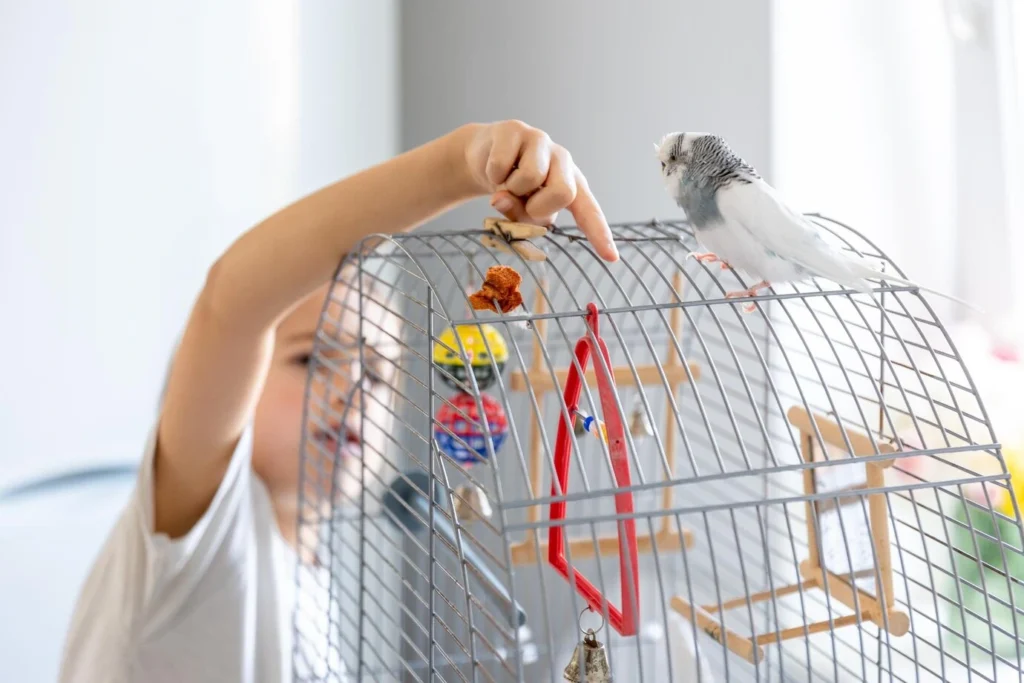
Even well-intentioned bird owners frequently make these mistakes:
❌ Choosing a cage based primarily on appearance or price rather than the bird’s specific needs
❌ Selecting an undersized cage to save space, limiting the bird’s movement and quality of life
❌ Incorrect bar spacing that allows escape or limb entrapment
❌ Overcrowding the aviary with too many toys, perches, and accessories
❌ Poor cage placement near drafts, direct sunlight, or kitchen fumes
❌ Inadequate cleaning routine leading to health issues
❌ Using inappropriate cleaning products with toxic ingredients
❌ Selecting round cages which can cause psychological distress in birds
Conclusion: Your Bird Cage Journey
Selecting the right bird cage is an investment in your pet’s long-term health and happiness. By considering your bird’s species, size, and behaviors, you can create a home that supports their physical and psychological well-being.
Remember that the best bird cage provides not just containment but enrichment—a space where your feathered friend can exercise, play, rest, and engage in natural behaviors. With proper bird cage placement, regular bird aviary cleaning, and thoughtful accessory selection, you’ll create an environment where your avian companion can truly thrive.
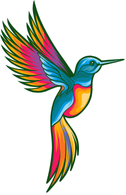
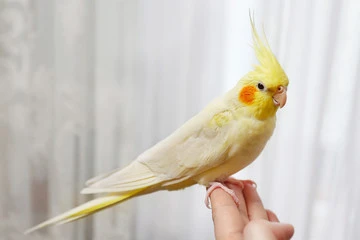
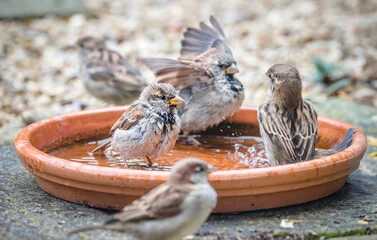
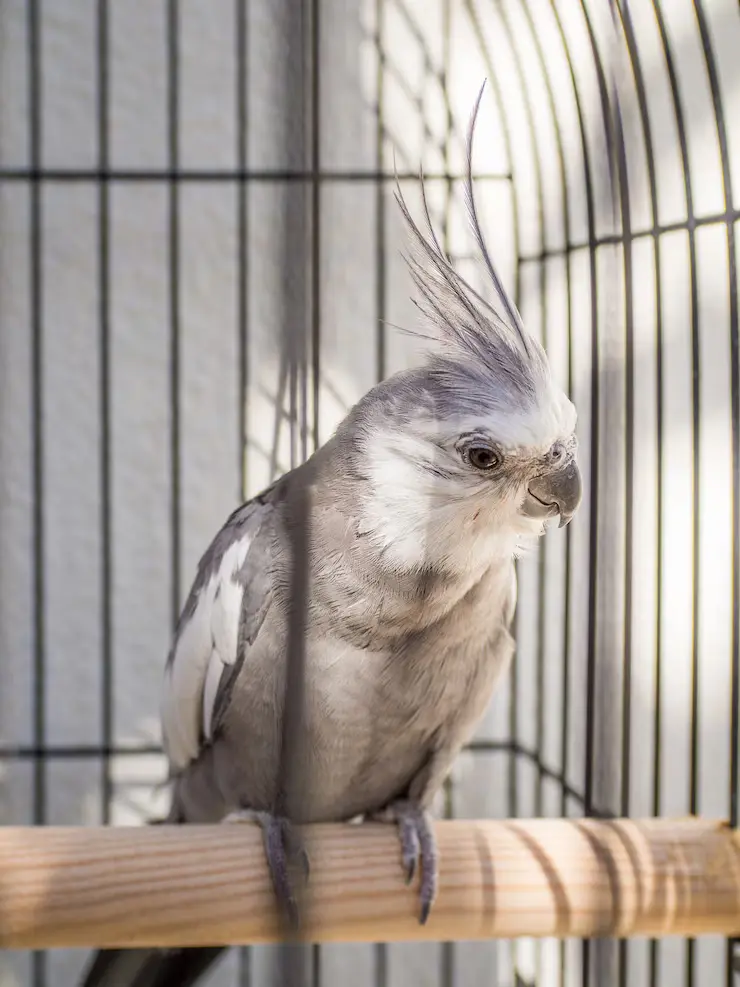


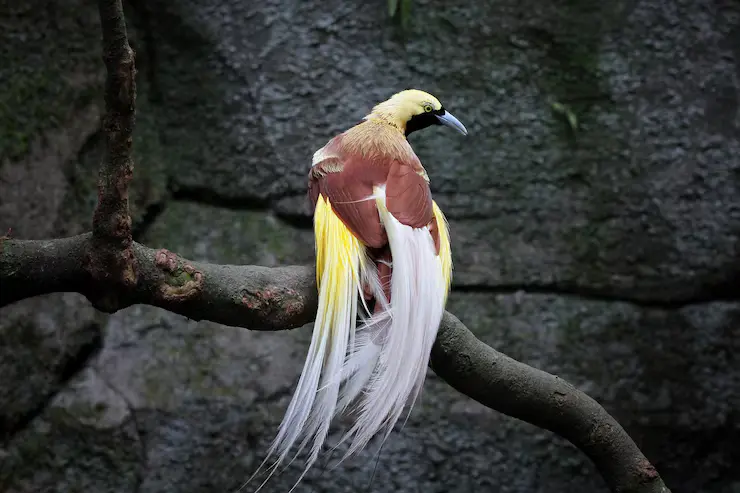
5 Comments